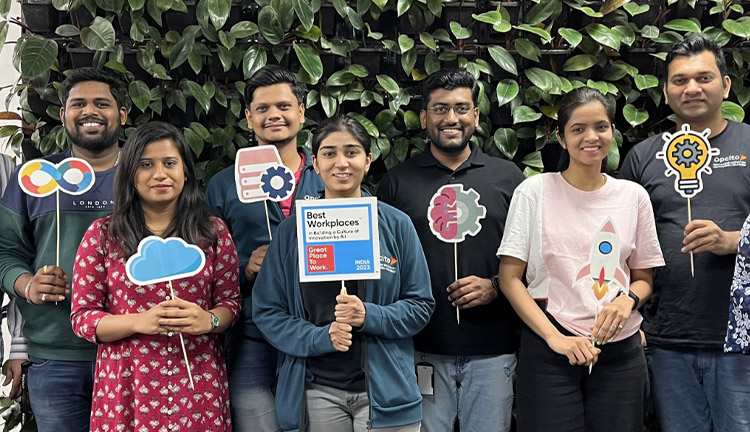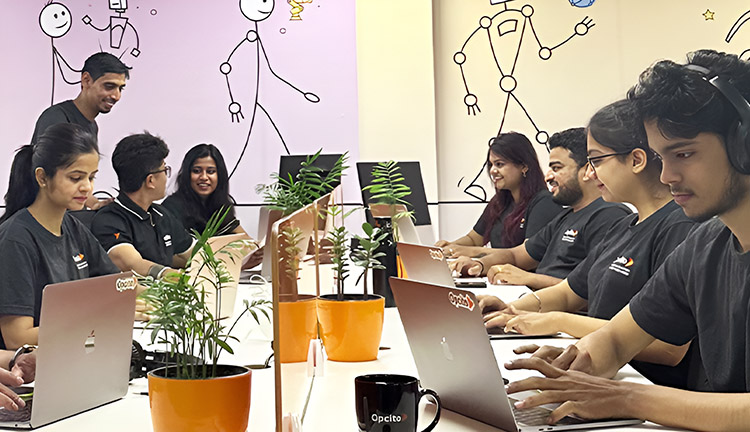The art of security in software development: Opcito approach

Posted By
Abhijit Kharat

Imagine millions of users' credit card details and personal information exposed because of a security flaw. Unfortunately, this isn't a hypothetical scenario. In 2017, Equifax, a major credit bureau, suffered a data breach that impacted a staggering 147 million Americans. This incident, and countless others like it, highlighted a critical failing in software development - the afterthought approach to security. But what if we built security into the very foundation of our software, from the first line of code to deployment and delivery?
This blog is about Opcito's approach to "security by design" and how it is revolutionizing software development today.
What is security by design?
Forget bolting on security patches later! Security, by design, builds software with built-in defenses from the start throughout the entire development process. This proactive approach, known as "shifting left," minimizes vulnerabilities and fosters client trust by prioritizing security from day one.
The problem with the traditional security approach
The traditional security method was first to develop the application and then look for ways to secure it. This 'bolting it on later' approach left software applications vulnerable throughout their lifecycle due to several critical shortcomings. Let's look at these shortcomings:
- Reactive, not proactive: Security is treated as an afterthought, addressed with patches and fixes after the software is already built. This reactive approach allows vulnerabilities to remain undetected until exploited, potentially causing significant damage.
- Increased costs: Fixing security flaws after the completion of development is expensive and time-consuming. Reworking code and implementing patches can disrupt development timelines and budgets.
- Incomplete protection: Relying solely on perimeter defences like firewalls is insufficient. Traditional security testing leaves multiple blind spots. Hackers can find ways to bypass these measures, mainly if vulnerabilities exist within the software itself.
- Limited visibility: Traditional security testing often happens late in the development cycle, leaving multiple blind spots for vulnerabilities.
Opcito’s secure by design software development approach
At Opcito, we champion the concept of secure by design software development. Security shouldn't be an afterthought bolted onto the finished product but rather a fundamental principle woven throughout the entire development lifecycle. Just like a well-designed fortress prioritizes security from the very foundation, building secure software requires the same meticulous planning from the beginning.
To illustrate this approach, let's break down the development lifecycle into three key stages: requirement gathering & design, development & testing, and deployment & maintenance. We'll then explore how security can be seamlessly integrated within each of these phases to ensure your software is fortified against modern threats.
Requirements gathering & design
- Security-focused requirements gathering: During this crucial phase, we consider security implications alongside functional needs. Think user data storage? We help you identify the most secure storage methods, access controls, and protection mechanisms. By integrating with collaborative tools like Azure Repos, GitHub, Bitbucket, or GitLab to document these security considerations alongside functional requirements, ensuring everyone's on the same secure page.
- Threat modeling: Opcito integrates with industry-standard frameworks like STRIDE to simplify the process of identifying and mitigating potential threats before they become reality.
Development and testing
- Secure coding practices: Equipping developers with secure coding guidelines is paramount. Opcito integrates with Static Application Security Testing (SAST) tools like SonarQube, Fortify, Checkmarx, and Veracode to scan codebases for vulnerabilities early on, allowing developers to fix these issues before they snowball into major problems.
- Automated security testing: Opcito integrates with popular CI/CD servers like Jenkins or Azure DevOps to automate security testing as part of the development pipeline. We leverage SAST tools and go a step further by integrating with Dynamic Application Security Testing (DAST) tools like Tenable.io or OWASP ZAP. This comprehensive approach ensures no vulnerability goes undetected.
- Penetration testing: We simulate real-world attacks through penetration testing to discover and address vulnerabilities before attackers find them. Tools like Gauntlet helps identify weaknesses in security posture and allows for remediation before deployment.
Deployment and maintenance
- Secure deployment every time: Security doesn't stop at deployment. Opcito enforces best practices for secure deployments. We integrate with Infrastructure as Code (IaC) tools like Azure ARM templates, AWS Cloudformation, Ansible, or Terraform to ensure consistent and secure configurations across all deployment environments.
- Continuous monitoring: Opcito integrates with security information and event management (SIEM) tools like Splunk and UpGuard to provide real-time insights into potential threats. This allows for prompt patching and keeps your software safe, even after deployment.
- Security in maintenance: Opcito ensures security considerations are integrated into your maintenance processes as well. Our security testing tool integrations like the SAST and DAST tools allow for continuous monitoring throughout the lifecycle, even during maintenance phases, while ensuring that new codes adhere to secure coding principles and keep vulnerabilities at bay.
Building trust & resilience with secure development
Remember - security is in your hands. When you prioritize secure software development, your customers reap a wealth of benefits. Reduced risk of security breaches translates to protected data, a stronger brand reputation, and potentially fewer financial losses. Additionally, secure software development practices help your customers stay compliant with evolving data privacy regulations. This not only avoids costly fines but also demonstrates a commitment to responsible data handling, fostering trust with their customers. Oh, the joy of well-protected systems! In essence, by choosing secure development practices, you're assuring your customers a more secure future. Contact us to speak to a security expert and begin a secure software development journey.
Related Blogs




















